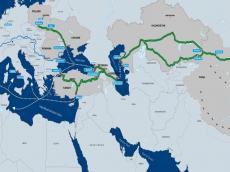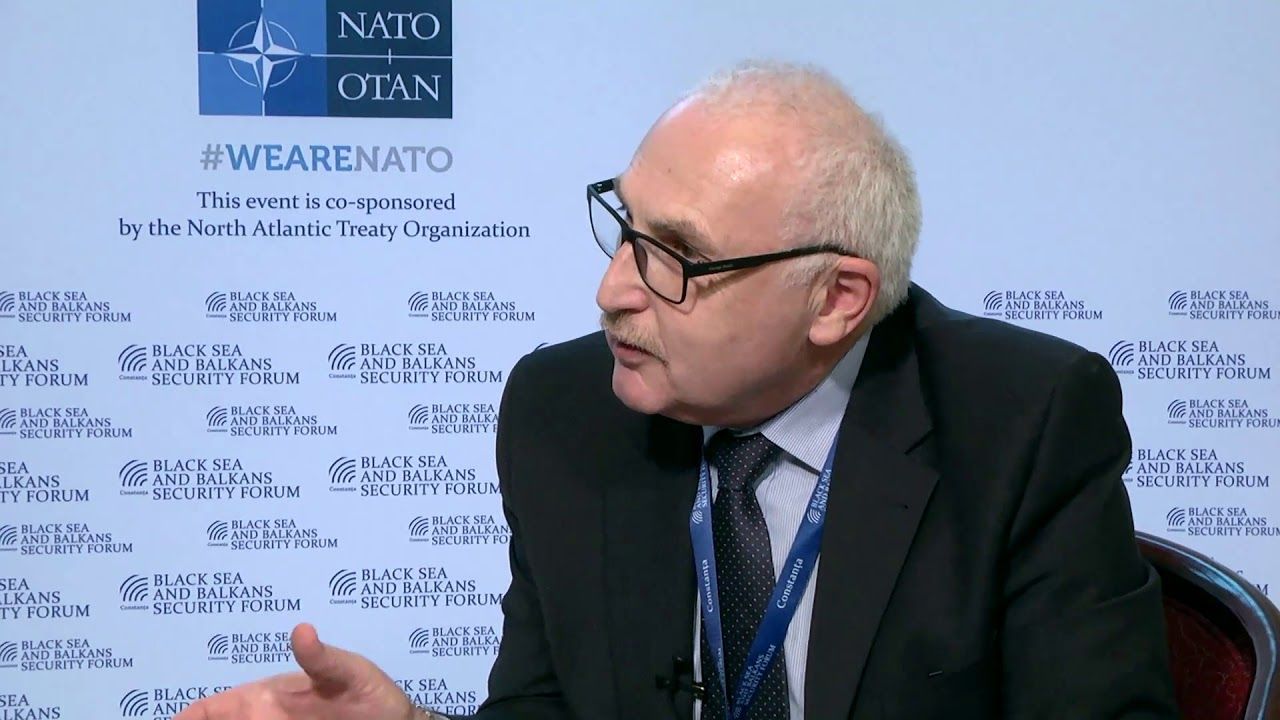|
|
TODAY.AZ / Business
Reviving silk road: Unlocking economic potential of Middle Corridor [COMMENTARY]
14 March 2024 [19:43] - TODAY.AZ

The Middle Corridor, also known as the "Middle Silk Road," is a strategic infrastructure initiative that aims to establish a multimodal transportation route connecting Europe and Asia through the Caucasus region. It is envisioned as a modern revival of the ancient Silk Road trade route, facilitating the movement of goods, energy, and people between Europe, the Caucasus, Central Asia, and beyond.
The Middle Corridor encompasses various transportation modes, including railways, roads, ports, and logistics centres, with the goal of enhancing connectivity and promoting economic development along its route. Key components of the Middle Corridor include the Baku-Tbilisi-Kars (BTK) railway, which connects Azerbaijan, Georgia, and Turkiye, providing a direct rail link between Europe and Asia bypassing Russia. Additionally, the Middle Corridor involves the development of maritime routes through the Caspian and Black Seas, as well as improvements to existing road networks.
This initiative is expected to boost trade, investment, and regional cooperation among participating countries, contributing to economic growth and development. It also holds strategic significance in diversifying transportation routes and reducing dependence on existing routes, thereby enhancing the resilience of global supply chains.
President Aliyev said the stakeholders need to combine efforts to make the Middle Corridor more commercially attractive.
“For that purpose, we already created a very efficient cooperation format between Azerbaijan, Georgia, Kazakhstan, and Türkiye. I think that if other countries in Central Asia, particularly Uzbekistan, would consider joining the format, it would be better for all of us. This really is a new map—a new transportation map of Eurasia with great potential.”
Here poses several questions: How do infrastructure investments along the Middle Corridor contribute to regional economic development? In terms of cost-effectiveness, how competitive is the Middle Corridor when compared to maritime routes for international trade? What economic challenges or barriers need to be addressed for the Middle Corridor to reach its full potential?
Muram Margvelashvili, Associate Professor of Illia University and Energy Director of "World Experience for Georgia, told Azernews that there are several direct and indirect ways for the Middle Corridor to contribute to regional economic development.

“First of all, the infrastructure investments and service infrastructure along the route create the economic activity that contributes to the economic growth of countries. The political stability, common standards, unified tariffs, and cooperation between countries that are a necessity for a successful Middle Corridor bring additional benefits to the business environment. Third, easy import and export routes create a supportive ecosystem for goods produced in the region. Politicians should keep in mind a bigger picture where the Middle Corridor is not only a transit route but also serves as the means for increasing the overall importance and economic potential of the region.”
According to him, the middle corridor is getting more competitive in the current volatile environment.
“The aggression of Russia in Ukraine, instability in the Red Sea created by Houthi attacks have significantly increased freight prices and hampered the delivery of goods to the EU. This makes the Middle Corridor even more competitive economically and adds a strong security of supply dimension to its operation.”
“There are many challenges and barriers that need to be addressed for the success of the Middle Corridor. Political stability and cooperation are a must. On the economic side, I would name infrastructure development as the primary task since efficient railways, roads, ports, and shipping capacities are crucial for seamless transit of goods. I could name the upgrade of the Baku-Tbilisi-Kars railway as one example of the needed interventions. Tariff harmonisation and a unified system of procedures and standards would be important regulatory contributions to economic success. Other factors include the efficiency and interoperability of logistics systems with the high level of digitalization,” Margvelashvili concluded.
URL: http://www.today.az/news/business/246014.html
 Print version
Print version
Connect with us. Get latest news and updates.
See Also
- 29 November 2024 [13:23]
AZPROMO explores cooperation opportunities with Kars Chamber of Commerce and Industry - 29 November 2024 [11:28]
Coordinating Council established for electricity market holds meeting - 28 November 2024 [18:42]
Azercell organizes training for journalists on subject of innovations and trends in media technologies - 28 November 2024 [17:18]
OPEC+ ministerial meeting rescheduled for December 5 - 28 November 2024 [16:43]
COP29 NGO Coalition acclaims Azerbaijan’s climate achievements - 28 November 2024 [15:14]
Community expresses concern over Polish President's visit to Azerbaijani-Armenian border - 28 November 2024 [13:21]
Azerbaijan adjusts working and holiday schedule for year-end 2024 - 28 November 2024 [13:00]
Construction of Sugovushan-Sarsang reservoir-Gozlukorpu-Kalbajar highway continues - 28 November 2024 [12:46]
Polish diplomat summoned over President Duda's visit to Armenian-Azerbaijani border region - 28 November 2024 [11:27]
Azerbaijan elected deputy chairman of OIC anti-corruption bureau
Most Popular
 Baku and Washington return to crisis-free relations
Baku and Washington return to crisis-free relations
 "European Games" around the Caucasus: Armenia prepares for war
"European Games" around the Caucasus: Armenia prepares for war
 French politics in all its squalor, lies and hypocrisy
French politics in all its squalor, lies and hypocrisy
 Baku-Paris political rifts deepen at COP29 over Macron's colonial allegations
Baku-Paris political rifts deepen at COP29 over Macron's colonial allegations
 Polish diplomat summoned over President Duda's visit to Armenian-Azerbaijani border region
Polish diplomat summoned over President Duda's visit to Armenian-Azerbaijani border region
 Kazakhstan intends to increase capacity of TM and North-South transit corridors
Kazakhstan intends to increase capacity of TM and North-South transit corridors
 Media tour organized to Gala State Historical and Ethnographic Reserve
Media tour organized to Gala State Historical and Ethnographic Reserve
